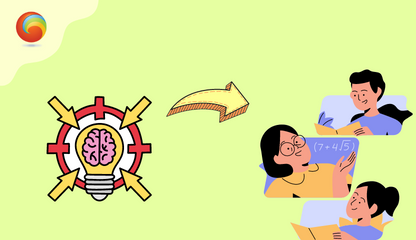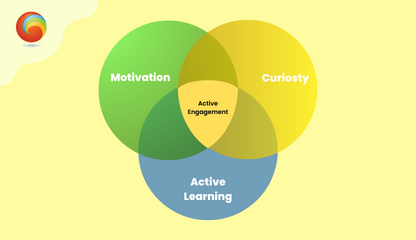Mental Models - The Art Of Thinking Clearly
A mental model is simply a representation of how something works. We cannot keep all of the details of the world in our brains, so we use mental models to simplify the complex into understandable and organizable chunks.
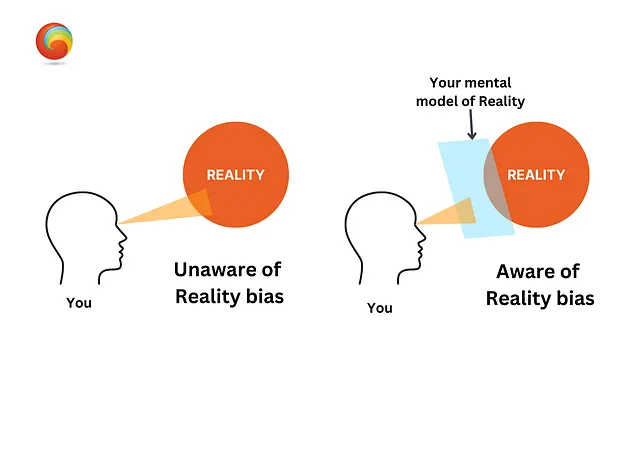
Let’s dig a little deeper into mental models.
Although it feels to our conscious self that we interact with the real world directly, in fact, we interact indirectly with the real world through our mental models of it. Think of mental models as a lens between you and reality, coloring what you see. Remember that we should think of mental models as a lens between us and reality, coloring what we see.
What Are Mental Models?
Mental models are how we understand the world. Not only do they shape what we think and how we understand but they shape the connections and opportunities that we see. Mental models are how we simplify complexity, why we consider some things more relevant than others, and how we reason.
Let’s break this down.
- Information is data.
- Thinking is the process of structuring information to make it useful.
- Knowledge (also known as a mental model) is built when you structure information to give it meaning.
Looking at this as a simple equation can help make these complex ideas more accessible.
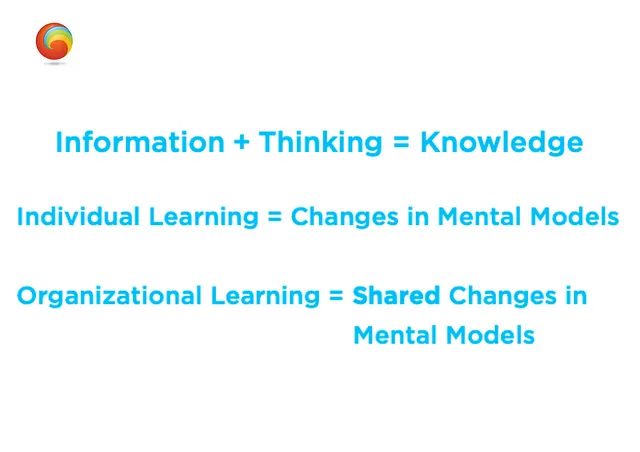
The Core Mental Models
- The Map is Not the Territory
- Circle of Competence
- First Principles Thinking
- Thought Experiment
- Second-Order Thinking
- Probabilistic Thinking
- Inversion
- Occam’s Razor
- Hanlon’s Razor
A map of reality is not reality. Even the best maps are imperfect. This is because they diminish what they represent.
If the map perfectly represented the area, it would no longer be a reduction and thus helpful to us.
A map can also be a snapshot of a moment, representing something no longer exists. This is important to remember when thinking about problems and making better decisions.
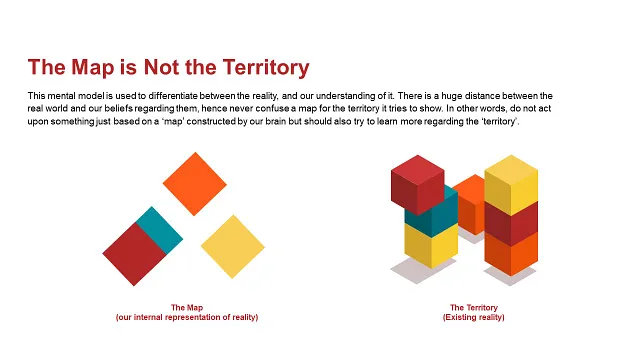
When ego and not competence drive what we undertake, we have blind spots. If you know what you understand, you know where you have an edge over others.
When you are honest about where your knowledge is lacking, you know where you are vulnerable and where you can improve. Understanding your circle of competence improves decision-making and outcomes.
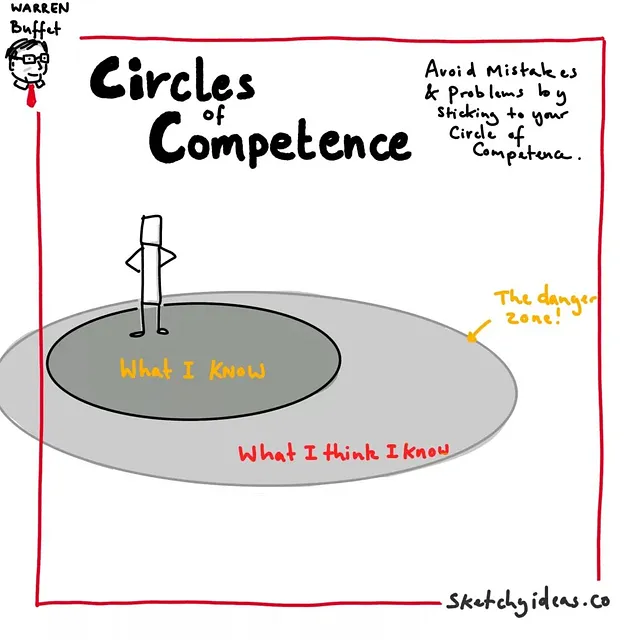
First-principles thinking is one of the best ways to reverse-engineer complicated situations and unleash creative possibility.
Sometimes called reasoning from first principles, it’s a decision making model to help clarify complicated problems by separating the underlying ideas or facts from any assumptions based on them.
What remains are the essentials. If you know the first principles of something, you can build the rest of your knowledge around them to produce something new.

Thought experiments can be defined as “devices of the imagination used to investigate the nature of things.” Many disciplines, such as philosophy and physics, make use of thought experiments to examine what can be known.
In doing so, they can open up new avenues for inquiry and exploration. Thought experiments are powerful because they help us learn from our mistakes and avoid future ones.
They let us take on the impossible, evaluate the potential consequences of our actions, and re-examine history to make better decisions. They can help us both figure out what we want, and the best way to get there.
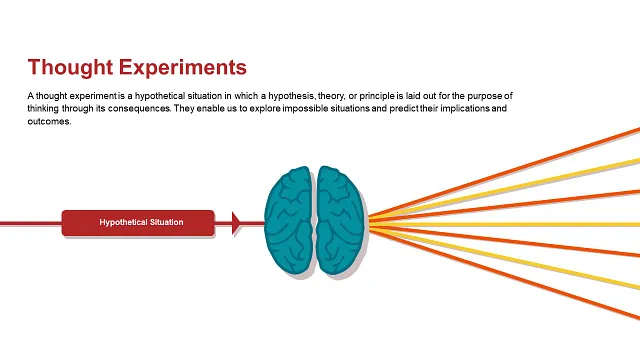
Almost everyone can foresee the immediate results of their actions. This kind of art of thinking clearly & first-rate thinking is easy and safe, but it’s also a way to make sure you get the same results as everyone else.
Second-order thinking goes beyond future and holistic thinking. It requires us to consider not only our actions and their immediate consequences but also the later consequences of those actions. Ignoring second and third-order effects can trigger disaster.
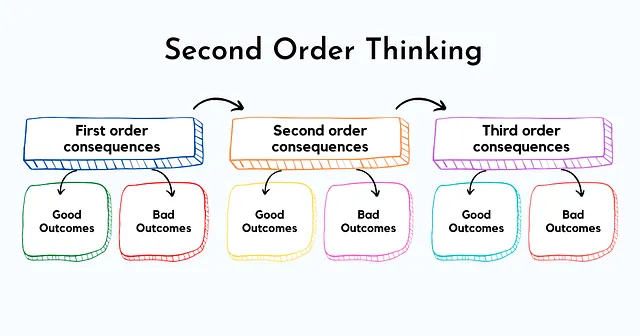
Probabilistic thinking is essentially trying to estimate, using some tools of math and logic, the likelihood of any specific outcome coming to pass.
It is one of the best decision making models we have to improve the accuracy of our decisions.
In a world where each moment is determined by an infinitely complex set of factors, probabilistic thinking helps us identify the most likely outcomes. When we know these, our decisions can be more precise and effective.
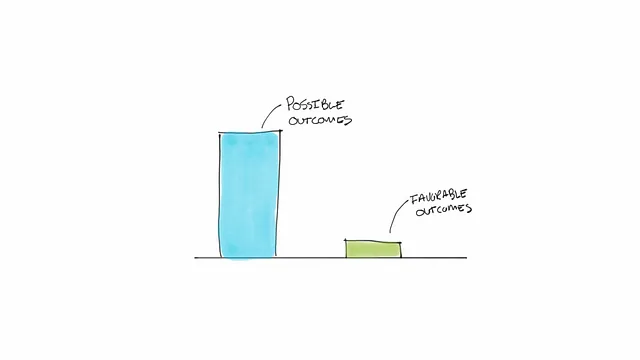
Inversion is a powerful decision making model to improve your thinking because it helps you identify and remove obstacles to success. The root of inversion is “invert,” which means to upend or turn upside down.
As a thinking tool, it means approaching a situation from the opposite end of the natural starting point. Most of us tend to think one way about a problem: forward.
Inversion allows us to flip the problem around and think backward. Sometimes it’s good to start at the beginning, but it can be more useful to start at the end.

Simpler explanations are more likely to be true than complicated ones. This is the essence of Occam’s Razor, a classic principle of logic and problem-solving — the art of thinking clearly.
Instead of wasting your time trying to disprove complex scenarios, you can make decisions more confidently by basing them on the explanation that has the fewest moving parts.

Hard to trace in its origin, Hanlon’s Razor states that we should not attribute to malice that which is more easily explained by stupidity.
In a complex world, using this model helps us avoid paranoia and ideology. By not generally assuming that bad results are the fault of a bad actor, we look for options instead of missing opportunities.
This decision making model reminds us that people do make mistakes. It demands that we ask if there is another reasonable explanation for the events that have occurred. The explanation most likely to be right is the one that contains the least amount of intent.


Reference links — fs.blog,cabrera research
Frequently Asked Questions
-
What is an example of a mental model?
- One example of a mental model is the concept of “paradigm shift," which refers to a fundamental change in how we perceive and understand a subject or field. This mental model encourages us to be open to new ideas, question established beliefs, and embrace change when necessary.
-
What is a mental model thinking?
- Mental model thinking is the process of using various mental frameworks or models to understand, analyze, and solve problems. It involves organizing information, identifying patterns, and gaining insights by applying these models. Mental model thinking helps individuals make sense of complex concepts, make better decisions, and adapt to new situations.
-
What is a mental model theory in learning?
- A mental model in learning is an individual’s internal representation or framework of understanding about a specific topic. It helps learners organize and interpret information, make connections, and solve problems. Mental models are influenced by prior knowledge and experiences and can be refined through active learning. Educators can support mental model development by promoting active engagement and critical thinking in the learning process.
-
What is a mental model in hci?
- A mental model in HCI means how a person thinks a computer system or interface works. Designers want to make the system match the user’s mental model to make it easy and intuitive to use. If there’s a mismatch, it can cause confusion and frustration. Designers work to understand and consider the user’s mental model to create user-friendly interfaces.
- Mental model book

